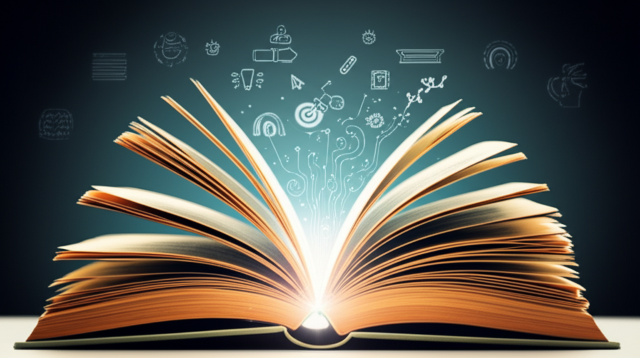
How to Learn Faster and Remember More
In today's fast-paced world, the ability to learn quickly and retain information effectively is a highly valued skill. Whether you're a student cramming for exams, a professional seeking to upskill, or simply someone who wants to expand their knowledge, mastering the art of efficient learning can significantly improve your life. This guide will explore practical strategies and techniques to help you learn faster and remember more.
Understanding How Learning Works
Before diving into techniques, it's crucial to understand the basic principles of learning and memory. Our brains are not passive sponges; they actively process and interpret information. Effective learning involves engaging multiple parts of the brain and strengthening neural pathways.
Short-term memory (STM) holds information temporarily, typically for a few seconds to minutes. Think of it as a scratchpad. Long-term memory (LTM) stores information for extended periods, sometimes indefinitely. Getting information from STM to LTM requires effort and effective strategies.
Active Recall: The Key to Retention
Passive reading or listening isn't effective learning. Active recall, the process of retrieving information from memory without looking at it, is arguably the most powerful technique. Instead of rereading notes, try to recall the information from scratch. If you get stuck, refer to your notes, and then try again later.
Techniques for Active Recall:
- Flashcards: Classic and effective for memorizing facts and definitions.
- Self-testing: Create practice questions or use quizzes to test your understanding.
- The Feynman Technique: Explain the concept in simple terms, as if you were teaching it to someone else. Identify gaps in your understanding.
- Practice Retrieval: Regularly test yourself on previously learned material to strengthen memory consolidation.
Spaced Repetition: Fighting the Forgetting Curve
The forgetting curve demonstrates that we forget information rapidly if we don't review it. Spaced repetition combats this by scheduling reviews at increasing intervals. Start by reviewing material soon after learning it, then again after a longer interval, and so on. This reinforces memory traces and prevents forgetting.
Tools for Spaced Repetition:
- Anki: A popular flashcard program that uses spaced repetition algorithms.
- Quizlet: A user-friendly platform for creating and studying flashcards with spaced repetition features.
- Memrise: Combines flashcards with gamification to make learning more engaging.
Chunking: Breaking Down Complex Information
Our brains struggle to process large amounts of information at once. Chunking involves breaking down complex information into smaller, manageable units. For example, instead of memorizing a long phone number as a single string of digits, break it into smaller chunks (e.g., three or four digits at a time).
Applying Chunking to Learning:
- Outline complex topics: Create an outline to organize the main points and sub-points.
- Use acronyms and mnemonics: Create memorable shortcuts for remembering lists or sequences.
- Group related concepts: Organize information into meaningful categories to improve comprehension and retention.
Interleaving: Mixing Up Subjects
Instead of studying one subject for an extended period, interleave your studies by switching between different subjects. This forces your brain to discriminate between concepts, strengthening memory and reducing interference.
Elaboration: Connecting New Information to Existing Knowledge
Elaboration involves actively connecting new information to what you already know. This creates a richer network of associations, making the information more meaningful and easier to remember. Ask yourself how the new information relates to your existing knowledge, experiences, and beliefs.
Dual Coding: Engaging Multiple Senses
Our brains process information more effectively when we engage multiple senses. Dual coding combines verbal and visual information, creating stronger memory traces. For example, draw diagrams, create mind maps, or use images to represent concepts.
Mind Mapping: Visualizing Information
Mind mapping is a visual technique for organizing and representing information. It creates a hierarchical structure with a central topic and branches representing related concepts. This visual representation helps you to understand the relationships between different ideas and improve retention.
Active Learning Strategies: Beyond Passive Consumption
Learning isn't just about absorbing information; it's about actively engaging with it. This involves participating in activities that require you to apply and use the information.
- Teach someone else: Explaining a concept to someone else strengthens your understanding and memory.
- Solve problems: Apply your knowledge by solving practice problems or working on projects.
- Discuss concepts with others: Talking about what you've learned with others helps to solidify your understanding.
- Create summaries and notes: Summarizing information in your own words forces you to process it actively.
Optimize Your Learning Environment
Your environment significantly impacts your ability to learn and retain information. Create a conducive learning space that is quiet, well-lit, and free from distractions. Minimize interruptions from technology and social media.
Prioritize Sleep and Physical Health
Sleep is essential for memory consolidation. Getting enough sleep allows your brain to process and store information effectively. Similarly, regular exercise, a healthy diet, and stress management techniques are all crucial for optimal cognitive function.
Embrace Mistakes as Learning Opportunities
Mistakes are inevitable in the learning process. Instead of viewing them negatively, embrace them as opportunities for growth. Analyze your errors, identify areas for improvement, and adjust your learning strategies accordingly.
Be Patient and Persistent
Mastering the art of efficient learning takes time and effort. Be patient with yourself, celebrate your progress, and don't get discouraged by setbacks. Consistency is key to achieving long-term success.
Conclusion
Learning faster and remembering more is not about innate ability; it's about mastering effective strategies and techniques. By implementing the strategies discussed in this guide, you can significantly enhance your learning capacity and achieve your academic and professional goals. Remember to experiment with different techniques to find what works best for you and maintain a consistent approach to learning.
No comments:
Post a Comment